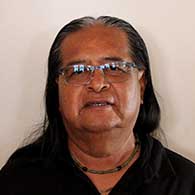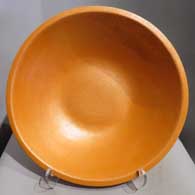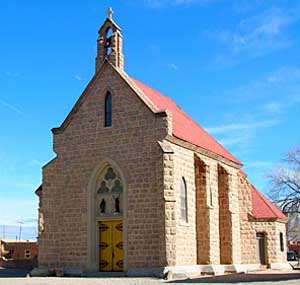
Clarence Cruz
Ohkay Owingeh(San Juan)


Clarence Cruz is from Ohkay Owingeh and a graduate of the BFA and MFA programs in Studio Arts at the University of New Mexico. Clarence also served an internship at the Maxwell Museum of Anthropology and, with that, added a minor in Museum Studies to his BFA.
Clarence likes to gather all his materials himself, collecting his clays, slips, volcanic ash, mineral pigments and Rocky Mountain beeweed (for making black paint and for use as a binder) on public lands in northern New Mexico. He does all his firing the traditional way: outdoors using wood, bark and manure for reduction firing, oxidation firing and open firing (to create fire clouds).
Clarence teaches graduate and undergraduate classes in Pueblo Pottery at the University of New Mexico. He also shares his knowledge and experience in the Art and Design Department at Santa Fe Community College and in Native communities.
Because of his dedication and contributions to the art of traditional Pueblo pottery, the Southwest Association of Indian Arts and the Santa Fe Indian Market awarded Clarence the Lifetime Achievement Allan Houser Legacy Award Honoring Pueblo Potters in 2012. Clarence has also had the opportunity to travel to China as part of a UNM faculty exhibition at the Jingdezhen Ceramic Institute. UNM also hired Clarence as Consultant Curator for the Inaugural Exhibition for the Alfonso Ortiz Center at the University's Maxwell Museum of Anthropology.
100 West San Francisco Street, Santa Fe, New Mexico 87501
(505) 986-1234 - www.andreafisherpottery.com - All Rights Reserved

Ohkay Owingeh (San Juan)

Ohkay Owingeh Mission
Ohkay Owingeh has a long history of pottery-making. Archaeologists even date certain timespans in the Pueblo II era by the San Juan Polychrome and San Juan Blackware potsherds that have been found in many digs. The styles were so striking for the time that archaeologists have been able to reconstruct trade routes by the date of appearance of those styles in different pueblos. But the making of pottery in the traditional way is not so widespread at Ohkay Owingeh these days.
In 2005 San Juan Pueblo officially changed its name back to the original name (before the Spanish arrived): Ohkay Owingeh (meaning: Place of the strong people). There are numerous abandoned ancient pueblos in the countryside around today's primary village of Ohkay Owingeh that have been archaeologically excavated and dated, but none of those excavations have yielded a date for the establishment of the village on the east side of the Rio Grande that was discovered by Don Juan de Oñaté in 1597.
The people of Ohkay Owingeh speak Tewa, and may have come to the Rio Grande area from southwestern Colorado or from the San Luis Valley in central Colorado. There is an archaeological record that possibly tracks their ancestors as they moved downstream through the valleys of the Ojo Caliente and Chama Rivers to the Rio Grande in the 1300 and 1400s. There is also an archaeological history showing there were Tanoan groups living in the area for hundreds of years before that.
Spanish conquistador Don Juan de Oñate took control of Ohkay Owingeh in 1598, renaming it San Juan de los Caballeros (after his patron saint, John the Baptist). He established the first Spanish capitol of Nuevo Mexico across the Rio Grande in the village of Yugue-Yunqué, an area he renamed San Gabriel. In 1608, the capitol was moved south to an uninhabited area that became the Santa Fe we know today.
After 80 years of progressively deteriorating living conditions under the Spanish, the tribe participated in the Pueblo Revolt of 1680 (one of the revolt's ringleaders, Popé, was an Ohkay Owingeh shaman) and helped to expel the Spanish from Nuevo Mexico for 12 years. However, when the Spanish returned in 1692, Popé had died, that tribal unity had collapsed and the individual pueblos were relatively easy for the Spanish to reconquer.
Today, Ohkay Owingeh is the largest Tewa-speaking pueblo (in population and land) but few of the younger generations are interested in carrying on with many of the tribe's traditional arts and crafts (such as the making of pottery, weaving of baskets and knapping of flint). The pueblo is home to the Eight Northern Indian Pueblos Council, the Oke-Oweenge Arts Cooperative, the San Juan Lakes Recreation Area and the Ohkay Casino & Resort. The tribe's Tsay Corporation is one of northern New Mexico's largest private employers. With the tribe's modern foray into casino operations, the younger members of the tribe say it's much easier to make a living flipping burgers, dealing cards or working security jobs than pursuing the production of traditional arts and crafts. This has become a problem everywhere there are Indian casinos, no matter who the tribe is.
100 West San Francisco Street, Santa Fe, New Mexico 87501
(505) 986-1234 - www.andreafisherpottery.com - All Rights Reserved
